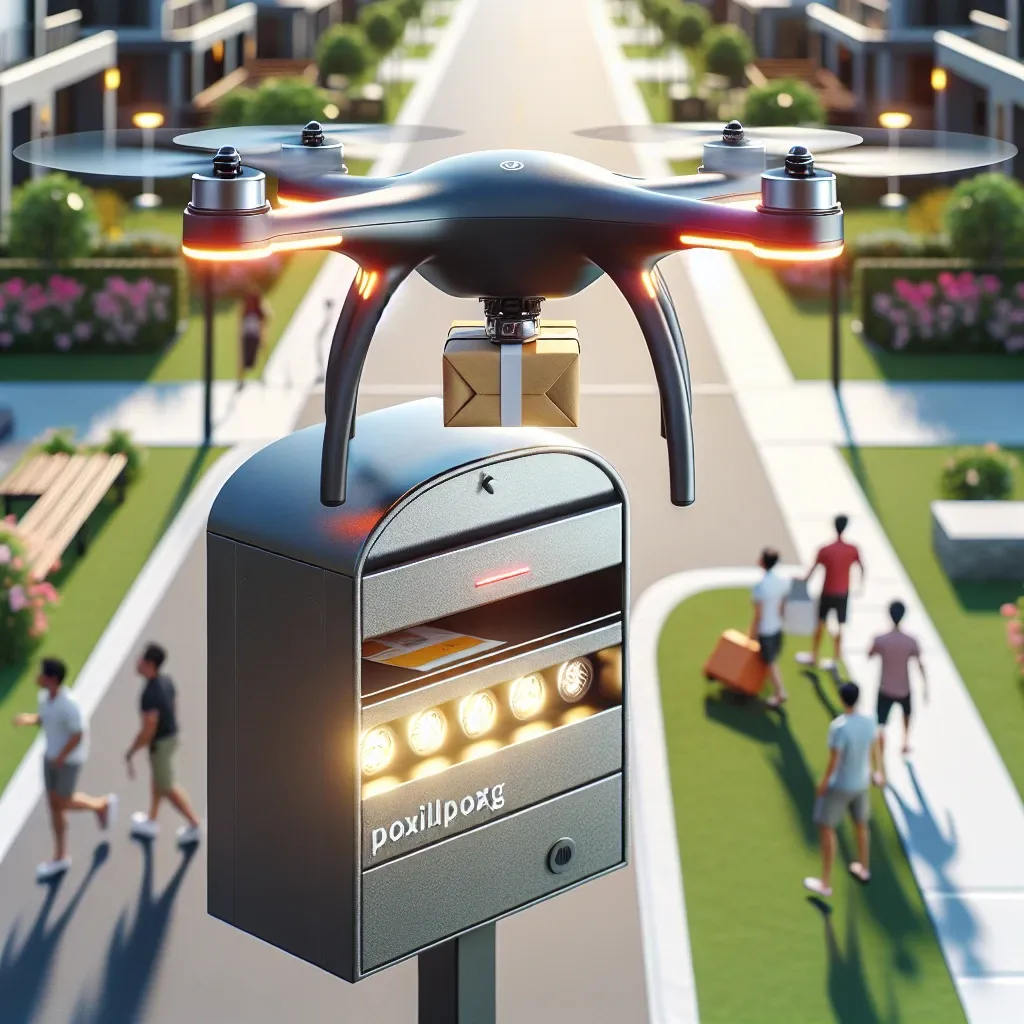The Rise of the Drone-Powered Mailbox
Imagine a world where your packages arrive not by truck or postal service, but silently and efficiently from the sky. This isn’t science fiction; it’s the dawn of drone-powered mailboxes, a revolutionary technology poised to reshape delivery systems worldwide.
Drone delivery systems offer a compelling alternative to traditional methods. They promise faster delivery times, especially in remote or hard-to-reach areas, reduced traffic congestion, and lower operational costs. This article delves into the mechanics, advantages, challenges, and future implications of this exciting innovation.
How Does a Drone-Powered Mailbox Work?
The core concept is relatively straightforward: a secure, automated mailbox designed to receive packages delivered by drones. This typically involves:
- Drone Technology: Drones equipped with advanced GPS navigation, obstacle avoidance systems, and secure package-release mechanisms are essential.
- Mailbox Design: Secure mailboxes, often featuring locking mechanisms and weatherproofing, are designed to protect packages from theft and the elements. Some designs incorporate features like automated package retrieval or notification systems.
- Communication Systems: Reliable communication links between the drone and a central control system ensure safe and efficient delivery. This generally includes real-time tracking and communication protocols to confirm safe delivery.
- Integration with Delivery Services: Integration with existing delivery networks or the development of new drone-based delivery services is crucial for widespread adoption.
The process usually involves the drone flying to a designated location, identifying the target mailbox, securely releasing the package, and then returning to its base. The entire process is frequently monitored remotely to ensure safety and efficiency.
Advantages of Drone Mail Delivery
The benefits of drone-powered mail delivery are numerous and far-reaching:
- Faster Delivery Times: Drones are significantly faster than traditional ground transportation, potentially reducing delivery times dramatically.
- Cost Efficiency: Automated systems reduce labor costs and fuel consumption, leading to lower overall expense.
- Improved Access in Remote Areas: Drones can easily reach remote or inaccessible locations, expanding delivery services to areas previously underserved.
- Reduced Traffic Congestion: By shifting deliveries to the air, drone delivery reduces traffic congestion on roads.
- Environmental Considerations: With the right technology, drone delivery can significantly reduce fuel consumption and carbon emissions compared to traditional methods.
- Enhanced Security: Secure mailboxes and tracking systems can reduce package theft and loss.
Challenges and Considerations
Despite the many advantages, several hurdles remain before drone-powered mailboxes become commonplace:
- Regulatory Hurdles: Regulations concerning drone airspace, safety protocols, and liability need to be developed and standardized.
- Technological Limitations: Battery technology, weather conditions, and range limitations still need improvement for broader application.
- Security Concerns: Preventing unauthorized access to packages and drone systems is paramount.
- Public Acceptance: Building public trust and acceptance of drone technology is essential for widespread adoption.
- Infrastructure Costs: The initial investment in infrastructure, such as mailboxes and communication networks, can be significant.
The Future of Drone-Powered Mailboxes
The future of drone-powered mailboxes appears bright. As technology advances and regulations evolve, we can expect:
- Increased Efficiency and Capacity: Improved drone technology will lead to greater delivery capacity and efficiency.
- Wider Geographic Coverage: Drone delivery will expand to serve more areas, including remote villages and rural communities.
- Integration with Smart Cities: Drone delivery will likely integrate with smart city infrastructure for optimal traffic management.
- Personalized Delivery Options: Consumers may have greater control over their delivery times and options.
- Expansion Beyond Mail: The technology may extend beyond mail delivery to encompass other goods and services.
Drone-powered mailboxes represent a significant leap forward in logistics and delivery. While challenges remain, the potential benefits are substantial. The ongoing development and implementation of this technology promise a future where deliveries are faster, more efficient, and more environmentally friendly.
Conclusion
The transition to drone-powered mailboxes is not merely a technological advancement; it’s a paradigm shift in the way we receive goods and services. As technology continues to mature and regulations adapt, we can anticipate a significant impact on logistics, e-commerce, and daily life across the globe. The innovative solutions being developed promise a more efficient, sustainable, and convenient future for mail and package delivery.

Leave a Reply